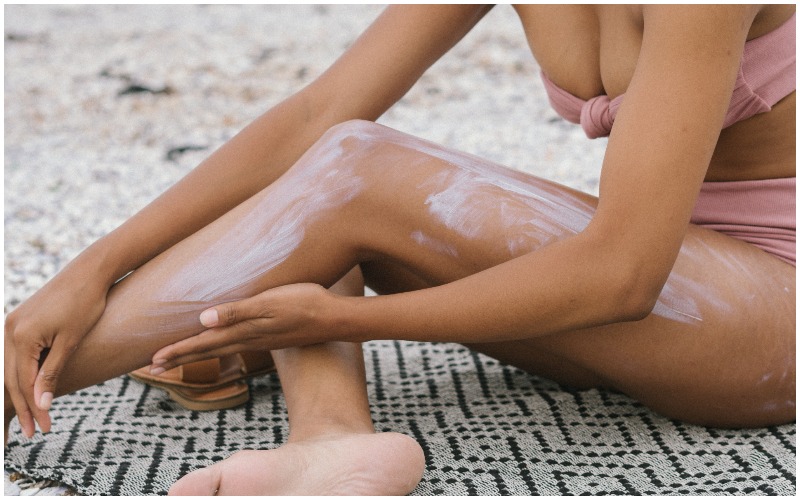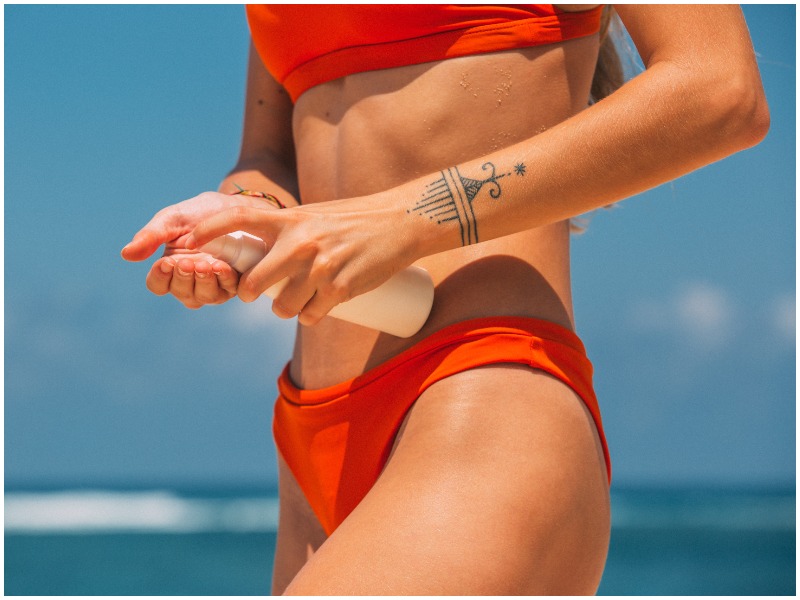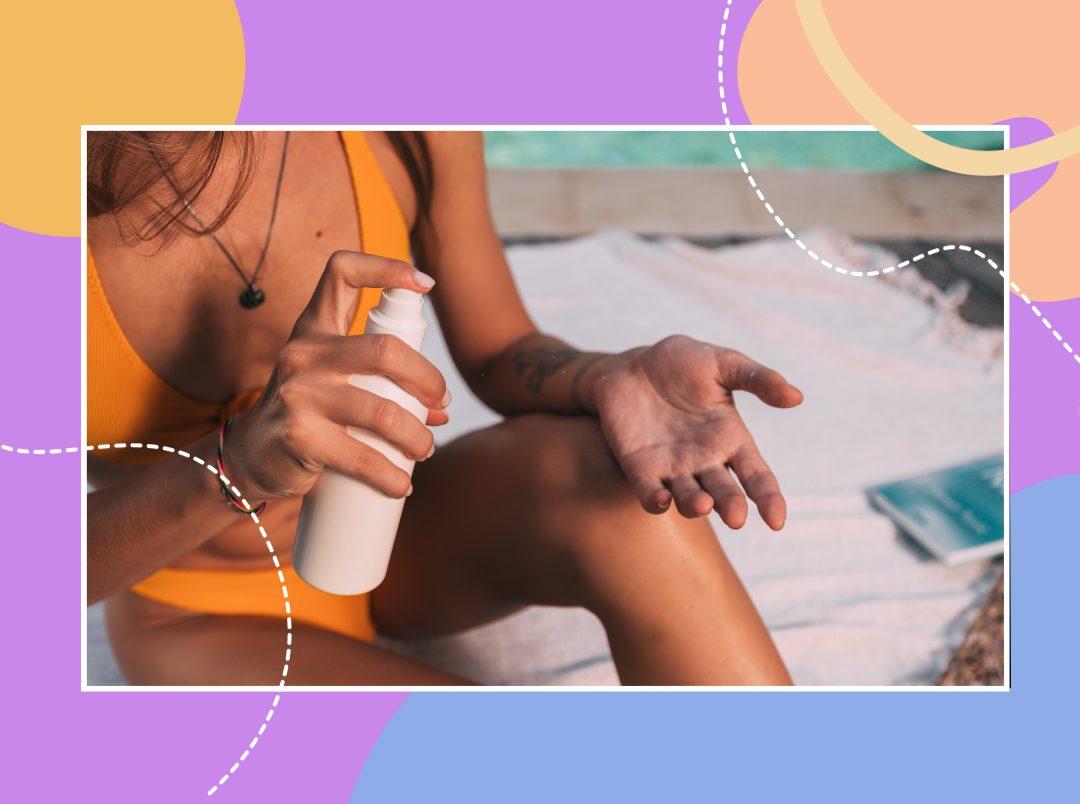It is no secret that sunscreen is a must. Not just when you’re spending time outdoors, but also on days when you are stuck indoors. However, while choosing the right sunscreen for your skin type, do you check the label for ingredients used in the sunscreen? If not, you should start checking the sunscreen ingredients because it can make all the difference to your skin. Certain ingredients used in sunscreen have raised health concerns, while some chemicals impact the environment more than you think. Which brings us to the question- how do you know which ingredients are safe, and which sunscreen ingredients to avoid? For your ease, we have compiled a list of a few sunscreen ingredients that you should be cautious of, while also listing down other safer alternatives that you can try instead.
Sunscreen Ingredients To Avoid
- Oxybenzone
- Octinoxate
- Fragrance
- Homosalate

The sunscreen you slather on before you take a dip in the beach affects the fragile marine environment as it washes off. Certain chemicals present in sunscreens have been shown to have adverse environmental impacts, which is why it is important you know about these sunscreen ingredients and try to avoid them if possible.
Not just that, some studies have also raised concern over a potential link between certain chemicals used in sunscreen and endocrine disruption. While there hasn’t been any conclusive evidence, it is best to watch out for these sunscreen ingredients, especially since there are safer alternatives out there.
Oxybenzone
Oxybenzone is one of the most popular sunscreen ingredients that helps filter both UVA and UVB rays. While it is an approved ingredient in some countries, Hawaii has banned this sunscreen ingredient as it has been linked to bleaching and poisoning coral reefs. The Environmental Working Group (EWG) considers oxybenzone to be one of the ‘most worrisome sunscreen active ingredients’ and may have a potential link to endocrine disruption.
Apart from this, a recent study found that our skin readily absorbs ingredients such as oxybenzone, even though the study reported no harm found. However, if you’re more of a ‘better safe than sorry’ person, and want to be extra-cautious, you might wanna consider physical sunscreens instead- the ones that sit on top of your skin, instead of getting absorbed.
Octinoxate
Octinoxate (also called Octyl methoxycinnamate or OMC) is another popular sunscreen ingredient found commonly in chemical sunscreens, and it protects against UVB rays. While this ingredient is allowed in sunscreen formulations, the sale of sunscreens with octinoxate has been banned in a few countries as they may pose environmental risks to coral reefs.
There have also been concerns regarding this sunscreen ingredient as animal studies have shown that octinoxate may affect thyroid hormone production, and may be linked to endocrine disruption. However, these studies were not conducted on humans, and recent research hasn’t found conclusive evidence related to its adverse health outcomes. Even so, there are plenty of sunscreens available in the market that are free of oxybenzone and octinoxate, that you can opt for instead!
Fragrance

If you’re someone who likes beauty products that have a pleasant scent, you might pick a fragrant sunscreen bottle from the shelf. However, artificial fragrances in skincare products aren’t absolutely harmless. They are the most common allergen in skincare products and may cause skin irritation if you have sensitive skin. Which is why, it’s best to play safe and opt for fragrance-free sunscreens.
Homosalate
Homosalate is a widely-used sunscreen ingredient, and this chemical may cause irritation or allergic reactions to those with sensitive skin. There are also certain concerns about homosalate’s potential link with endocrine disruption. However, these studies were conducted in vitro, and there’s no definitive data. More research is needed on that, as these studies weren’t conducted on humans under real-world conditions. Even so, if you are concerned about homosalate in sunscreens, you can instead opt for sunscreens without this ingredient, or mineral sunscreens.
Sunscreen Ingredients To Use
- Titanium Dioxide
- Zinc Oxide

While there’s not much evidence that permitted chemicals in sunscreen can pose a risk (since most of the studies were conducted in vitro), there are other safer alternatives that you can opt for, in case you are concerned. Physical sunscreens are a great option, and usually have safe active sunscreen ingredients that can protect against UVA and UVB rays. Below are two sunscreen ingredients generally recognized as safe and effective (or GRASE) by the FDA.
Titanium Dioxide
Titanium dioxide is usually found in mineral-based sunscreens and has been approved by the FDA for use in those older than 6 months. Not only does this sunscreen ingredient serve as a broad-spectrum UV filter, but it is also highly stable and has a good safety profile. While there are no such health concerns associated with titanium dioxide, it does have a slight disadvantage. It is often hard to spread on the skin, and may leave a white cast.
Zinc Oxide
Zinc oxide is another GRASE sunscreen ingredient that you’ll find in physical sunscreens. It is considered safe, and does not penetrate the skin, even after repeated use. It is non-irritating, making it a great ingredient in sunscreens for sensitive skin. Zinc oxide sunscreens blend easily, but certain formulations with zinc oxide may leave a white cast behind. However, it is important to note that zinc oxide nanoparticles are harmful to marine organisms, so sunscreens with zinc oxide are definitely not reef-safe or eco-friendly.
Now that you know about these sunscreen ingredients, you can take an informed decision before buying one. But remember, just because physical sunscreen ingredients are recognized as safe and effective, doesn’t mean they are the best ones to buy. Both physical and chemical sunscreens come with their own pros and cons that you should check out before you decide to invest in one.
More About Sunscreens
Sunscreen Serums: Hate heavy SPFs? Here are some sunscreen serums that you can consider buying instead!
Sunscreens For Dry Skin: Check out some of the best sunscreens for dry skin that have nourishing and hydrating properties!
Featured Image: Pexels




